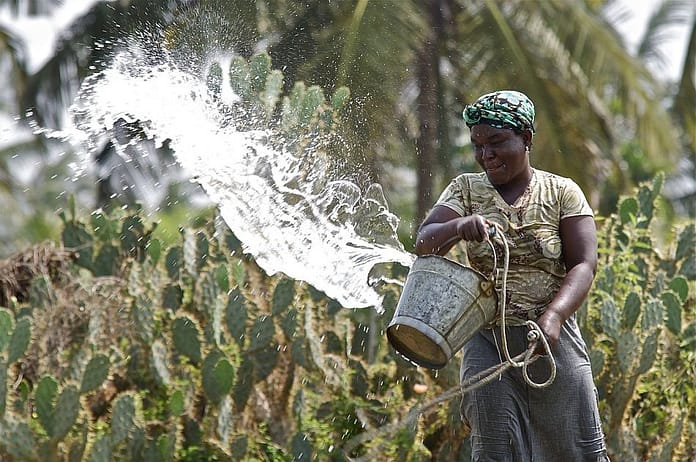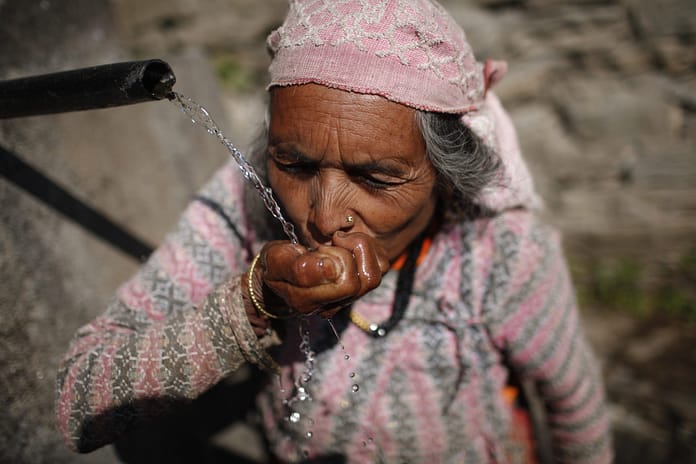By Binaya Raj Shrestha, Santosh Nepal & Anil Aryal

Globally, climate change is profoundly affecting water infrastructure. Changing weather patterns driven by climate change are resulting in more frequent and severe extreme weather events, erratic water availability, increased water scarcity and contamination of water sources. In Nepal, this year’s monsoon, which was predicted to be above normal, has caused massive damage to infrastructure-related projects, including water supply and sanitation.
Heavy rainfall from Sept. 27-29, 2024, caused widespread flooding and landslides. Of 222 monitoring stations, 77 recorded over 200 mm of rain on Sept. 28. The estimated economic loss from this event is about USD 343 million. Around 1,639 water supply projects were damaged, affecting intakes, pipelines, tanks, treatment plants and toilets, with losses estimated at more than USD 43 million. In June 2021, the Melamchi Water Supply Project, a key solution to Kathmandu Valley’s water shortage, faced nearly USD 15 million in losses from severe flooding. The climatic hazards, increased precipitation, rising temperatures, droughts, floods and landslides have also impacted water, sanitation and hygiene (WASH) systems. Further, climate change has exacerbated and severely affected WASH systems, causing financial loss and infrastructure damage, particularly in rural areas and vulnerable communities, including women, Dalits and other marginalized groups. WASH systems are highly sensitive to climate change and extreme weather events, WASH systems also have an impact on climate change, environment and affect disaster risk making it essential to build resilient systems to reduce vulnerability and risk.
SDG-6 target
The world is falling behind in achieving Sustainable Development Goal (SDG) 6 – Water and Sanitation, with meeting the target by 2030 becoming increasingly challenging. In least-developed countries, achieving universal WASH coverage by 2030 requires a dramatic increase in current rates of progress. Universal WASH coverage by 2030 requires a dramatic increase in current rates of progress—20 times higher for safely managed drinking water, 16 for safely managed sanitation and 12 for basic hygiene services. Despite Nepal’s 2015 constitution guaranteeing the right to clean drinking water and sanitation for all citizens, only 16% of the population use safely managed drinking water, 51% have safely managed sanitation and 64% access to basic hygiene services. Climate change further complicates efforts to meet national and global targets. Climate-resilient WASH development and effective coordination among WASH sector actors are essential for mitigating impacts and ensuring progress toward SDG 6.
Research findings
The International Water Management Institute (IWMI) and SNV Nepal conducted the Towards Climate-Resilient Inclusive Water Supply Services in Rural Nepal project, funded by Water for Women and supported by the Department of Foreign Affairs and Trade in Dailekh and Sarlahi districts. Participatory risk and impact assessments were conducted in two rural municipalities—Mahabu and Dungeswor (Dailekh) and Ramnagar and Parsa (Sarlahi) from Nov. 2023 to Feb. 2024. They looked to evaluate climate change risks, environmental degradation and disaster impacts on water supply systems at the municipal, ward and WASH system levels as well as the WASH systems’ impact on climate change, environmental degradation, and disaster.
The participatory assessment of 12 WASH systems in Mahabu RM revealed high vulnerability to landslides, floods, wildfires, earthquakes and deforestation. More than 83% of the systems were at high risk from landslides and 17% at medium risk. In the case of flooding, 75%, 17%, and 8% of the systems were at high-risk, medium-risk and low-risk, respectively. Similarly, in Dungeswor RM, the assessment of 12 water supply systems showed that all the systems were at risk from flooding, with over 80% vulnerable to earthquakes, 67% to landslides and 50% to drought. Among the surveyed systems, 67% were at high risk, 33% at low risk and none at moderate risk from floods.
In Sarlahi, we conducted a participatory risk assessment at the municipal and ward levels. The municipal and ward level assessment showed that the WASH systems in Ramnagar and Parsa RMs face significant risks from floods, drought and water pollution, worsened by excessive use of chemical fertilizers and pesticides as well as reduced rainfall depleting groundwater. Poorly maintained dug wells hinder groundwater recharge while toilet pits near handpumps contaminate shallow tube wells. Environmental and health risks stem from burning solid waste, improper faecal sludge disposal and using cow dung cakes, contributing to air pollution. Despite improved toilet coverage, open defecation persists, hindering public health efforts.
Recommendations
To enhance WASH system resilience, the project recommended conducting risk assessments to identify threats from climate change, environmental degradation and disasters to WASH systems. It is also essential to evaluate the impact of WASH systems on climate and disaster risks. Since many systems are vulnerable to these shocks, investing in climate-resilient alternatives is crucial. Although such systems require an additional upfront investment, they offer long-term returns, with every dollar invested in risk reduction saving up to USD 15 in post-disaster recovery. Strengthening systems using “building back better” principles and integrating resilience from planning to evaluation is essential. All four RMs have already adopted these principles in their WASH plans and budget for FY 2023/24.
As per the National WASH Policy 2023, capacity development for municipalities and local stakeholders, including water user committees, is vital to enhance their ability to assess, design and monitor resilient WASH systems. Municipalities should integrate resilience into their WASH plans, reflecting it in policies and programs with adequate budgets and support from provincial and federal governments. In 2023, the joint sector review of the WASH sector also acknowledged climate-resilient WASH service delivery in their 20-point declaration, emphasizing climate and disaster resilience in WASH plans and programs. However, governments must systematically commit to retrofitting and constructing climate-resilient systems. Climate finance can be instrumental in supporting these initiatives although local government capacity, policy frameworks and resource mobilization need significant improvement for meaningful progress.













